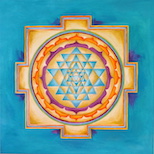
Many people find surfing from one website to another, lounging on the couch, drinking a beer or three in company or solitude relaxing. However, these actions are even more strenuous for the mind because instead of being relaxed and empty the mind is filled with even more new informations. These actions of the mind are, however, actions. And when the mind is tired so is the body. For those who still want to give themselves the best medicine, a complete, deep relaxation will be a real treasure.
An Easy Way to Relax Completely
The easiest way for a man to relax his brain and body is to lie down on the floor and close his eyes.
When the eyes are closed then they cease to send information to the brain and the brain thus ceases to be the recipient and processor of information from the outside world. Instead, another transformation and data processing is at his disposal. This is data from the inner world.
When the upper arms and the feet do not touch, deep and complete relaxation will be even deeper.
Great Yogic Relaxation Technique
The yogic technique of complete, deep and conscious relaxation is called Yoga Nidra.
This technique, like all yogic techniques and sciences, is a very precise technique with direct effects although people in the West often mistakenly call it any lying on their backs with their palms facing up Yoga Nidra.
Lying on your back with your eyes closed is certainly the easiest and easiest way to relax. However, if Yoga Nidra is practiced properly and taught by experienced connoisseurs, this technique can not only completely relax the mind and body but also become a transcendental experience.
In any case, it’s best to try it yourself.
Yoga Nidra
Nidra means sleep, but it is certainly not the kind of sleep that we all know. Nidra is a state between waking and sleeping. It is conscious sleep.
It is also not concentration but deep meditation. During the practice of Yoga Nidra, the mind is turned off, the unconscious and subconscious layers of the mind open.
What we call everyday life is driven by the unconscious within us. At this level of the mind live samskaras which are impressions from our entire lives. As in meditation, during the practice of Yoga Nidra we gain access to the deepest areas of our nature.
Only a deeply and completely relaxed mind can reach its true nature.
How Yoga Nidra is Practiced
A yogic technique for complete, deep relaxation is practiced by lying on your back with your palms facing up, eyes closed, in a quiet and warm room filled with warm and cosy light, in warm and comfortable clothing.
There is nothing else to do with Yoga Nidra other than listening the instructions of the teacher mentally but without concentration and attachment to these instructions. Thus, your tireless mind stops scanning, packing, analyzing, judging and measuring as it does when awake. It does not fight but releases and leaves things behind. Yoga Nidra is a technique of leaving behind or letting go.
At the beginning of practicing the technique, the body gradually relaxes, breathing begins to be noticed. After that, you will find yourself on the path through your emotions as well as on the path of visualizing your chakras (psycho-energy centers in the body), objects and symbols.
Benefits of Deep Yogic Relaxation
We all listen and watch, but many of us do it superficially.
Through the practice of deep relaxation, Yoga Nidra, the mind becomes sharp enough not only to listen and look at its surroundings with greater care and deeper understanding, but also develops insight into the greatest depths of one’s own feelings, emotions, impressions.
Yoga Nidra allows us to deprogram old schemes and learn from our own mistakes.
This technique of complete relaxation brings tremendous peace of mind and transformation. It brings us closer to our nature. It removes fears from our programmed mind, fosters creativity, regenerates our skin and inner life in our body.
It is said that one hour of practicing Yoga Nidra is the same as several hours of sleep. This technique is also a self-curing method.
The technique of yogic deep relaxation is described in ancient Tantric manuscripts.
Swami Satyananda revived this method, but still, this technique of complete relaxation is not his personal discovery.
Read more about brain frequencies, as well as the connection of Yoga Nidra with visual perception.



